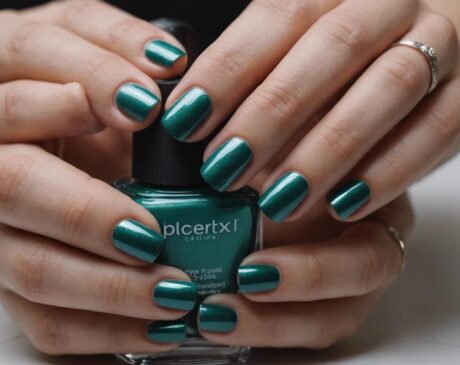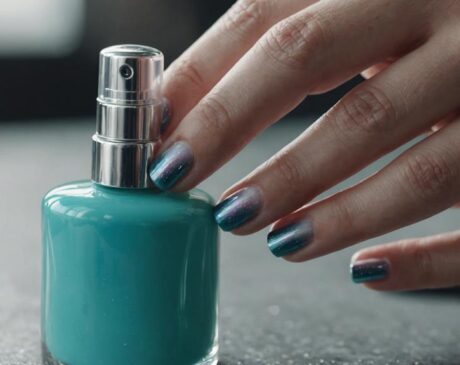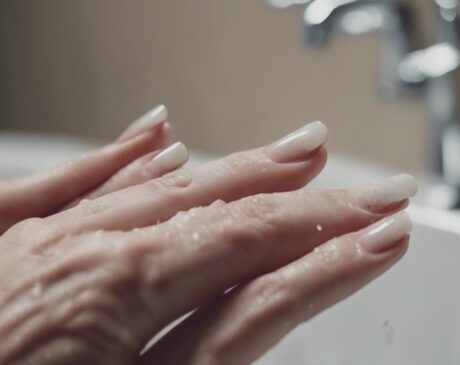Can rubbing alcohol remove press on nails?

Topical alcohol is common in homes and salons and plays an important role in nail care. It is known for its sanitizing properties and is often used to clean the surface of the nails before applying press-on nails to ensure that the base of the nails is clean and germ-free. Additionally, topical alcohol is the go-to solution for removing nail polish, removing oils that impede adhesion. Its quick-drying feature also prepares nails for a smoother application of artificial nails or polish.
The Science Behind Alcohol and Nail Glue
How Topical Alcohol Works
Due to its solvent properties, topical alcohol is very effective. It evaporates quickly and leaves no residue, which makes it ideal for cleaning and preparing nail surfaces. In the case of nail adhesives, topical alcohol weakens the bond formed by the glue, making it easier to remove press-on nails without causing damage to the natural nail.
Chemical Composition of Topical Alcohol
The main ingredient in topical alcohol is a mixture of isopropyl alcohol or ethanol and water. Isopropyl alcohol, in particular, is known for its powerful antiseptic properties. The concentration is usually around 70-90%, which determines its effectiveness in caring for nails and removing adhesives.
Interaction with nail adhesives
Nail glue is usually made of cyanoacrylate, an acrylic resin that adheres firmly to the surface of the nail. Topical alcohol interferes with this adhesive, causing it to lose its grip. This reaction is essential for safe removal of press-on nails, as it allows for gentle separation without damaging the natural nail.
Step-by-step guide to removing press-on nails with alcohol
Preparing your nails
Before starting the removal process, it is important to prepare your nails to avoid damage. Wash your hands thoroughly and gently push away the cuticle for better access to the entire nail surface.
Necessary tools and materials
You will need:
- Topical alcohol (preferably 70-90% concentration)
- Cotton pads or cotton balls
- A small bowl
- A nail file
- An orange stick or cuticle pusher
- Moisturizing lotion or cuticle oil
Safety Precautions
Make sure you are in a well-ventilated area to avoid inhaling fumes. Avoid direct contact with skin and wear protective gloves if you have cuts or wounds.
Removal Process
First file the top layer of the press-on nail to break the seal of the top coat. This enhances the effectiveness of the topical alcohol.
Application technique
Dip a cotton pad into the topical alcohol and place it on the nail. Wrap the finger with aluminum foil to hold the cotton pad in place. Hold for approximately 10-15 minutes. Starting at the edges, gently loosen the nail with an orange stick.
Tips to minimize damage
Be patient and gentle when removing nails. If the nail does not come off easily, reapply topical alcohol for a few minutes. After removal, moisturize nails with a moisturizing lotion or cuticle oil.
Alternative methods of removing pressure nails
Comparison with other solvents
Other common solvents such as acetone can also be used to remove artificial nails. Acetone is more caustic and can remove nails faster, but is more damaging to the skin and nails.
Natural and Gentle Removal Technique
A more natural method is to soak your nails in warm soapy water for 15-20 minutes, which can help loosen press-on nails. Oils such as olive oil or cuticle oil can also be used to gently wedge off the nail.
Aftercare and Maintenance
Aftercare after nail removal
After successfully removing a pressed nail, it is vital to focus on nail health. Begin by gently wiping your nails to smooth any rough edges or adhesive residue. Wash your hands thoroughly to remove any traces of alcohol or adhesive.
Moisturizing and Strengthening
Nails can become dry and brittle after using adhesives and solvents. Use Nourishing Cuticle Oil to hydrate cuticles and nails. Using a keratin nail strengthener can also help restore the integrity of your nails. Regularly moisturizing your hands with a quality hand cream will keep your skin and nails soft and healthy.
Prepare for your next application
Give your natural nails some time to breathe and recover before applying a new set of press-on nails. Make sure your nails are completely clean and dry. Use a mild nail buffer to create a smooth surface to better bond your next set of nails.
Expert Tips and Tricks
Advice from Professional Nail Technicians
Professionals recommend gentle movements during the removal process to prevent damage to natural nails. They also recommend investing in high-quality nail care products for aftercare, emphasizing the importance of keeping nails and cuticles well moisturized.
Do’s and Don’ts
Do: take a break between applications to allow your nails to recover. DO NOT: Pull or forcefully pull off press-on nails as this can damage natural nails. Do: use cuticle oil daily to keep your nails healthy. Do not: overuse harsh chemicals or solvents on your nails.
Common mistakes to avoid
Avoid neglecting to moisturize your nails and care for them after removal. Over time, not using nail strengtheners or cuticle oils may cause nails to weaken. Also, avoid using a new set of press-on nails immediately after removal.
Pros and cons of using topical alcohol for nail removal
Benefits of using topical alcohol
Topical alcohol is less aggressive than other solvents such as acetone, making it a safer option for people with sensitive skin or nails. It also evaporates quickly, reducing the risk of prolonged exposure to harsh chemicals.
Potential drawbacks and cautions
Topical alcohol, while gentle compared to stronger solvents, may take longer to dissolve nail glue. It may also dry out, so adequate aftercare is crucial. Users with certain skin conditions should consult a dermatologist before using topical alcohol on their nails.
User experience and reviews
Real-life stories
Many users shared positive experiences of using topical alcohol to remove nails, describing it as effective and gentle. Some noted improved nail health after switching from acetone to topical alcohol.
Successful removal cases
Several reviews emphasized successful nail removal without damaging the natural nail, especially when following recommended steps and aftercare advice.
Challenges encountered
Some users faced challenges such as longer removal times or the need to reapply topical alcohol. There were also instances where poor post-care resulted in dry and brittle nails.
Summarizing the key points
In this article, we explored the effectiveness of topical alcohol for removing pressed nails. We delved into the science behind topical alcohol and its interaction with nail glue to provide a step-by-step guide for safe and effective nail removal. The importance of post removal nail care, including moisturizing and strengthening, is emphasized. We also compare topical alcohol to other solvents and share expert tips and real-life experiences to fully understand the process.
Final Thoughts and Recommendations
While topical alcohol is a viable option for removing press-on nails, it is important to proceed with this process with caution. Always prioritize nail health and do not rush nail removal. Remember to moisturize and strengthen your nails after removal and consider giving them a break before reapplying. If you have sensitive skin or any specific nail condition, please consult a professional before using topical alcohol.
Frequently Asked Questions (FAQ)
Is topical alcohol safe for all types of press-on nails?
Yes, topical alcohol is usually safe for all types of press-on nails. However, if you have any special nail coatings or designs, it is important to test them on a small area first as this may affect their appearance.
How long should I leave topical alcohol on my nails?
It is recommended to leave the topical alcohol on the nail for approximately 10-15 minutes. However, this may vary depending on the type and strength of nail glue used. If the nail is not loose, you can leave the alcohol on for a few more minutes.
Can I reuse the alcohol once I’ve removed the pressure nail?
In many cases, you can reuse pressure nails after removing them with topical alcohol, provided they are still in good condition. Remove any residual glue and store properly for future use.
Are there any skin reactions to be aware of when using topical alcohol?
Topical alcohol can cause dryness and irritation, especially when used for long periods of time or frequently. If you have sensitive or allergic skin, wear gloves during handling and apply moisturizer. If you experience any adverse reactions, discontinue use.
What is the best alternative to removing nails with topical alcohol?
The best alternative to topical alcohol for nail removal is acetone-based nail polish removers, which are more effective but more damaging to the skin and nails. For a gentler approach, soaking your nails in warm soapy water or using an oil such as olive oil can also help loosen press-on nails.




